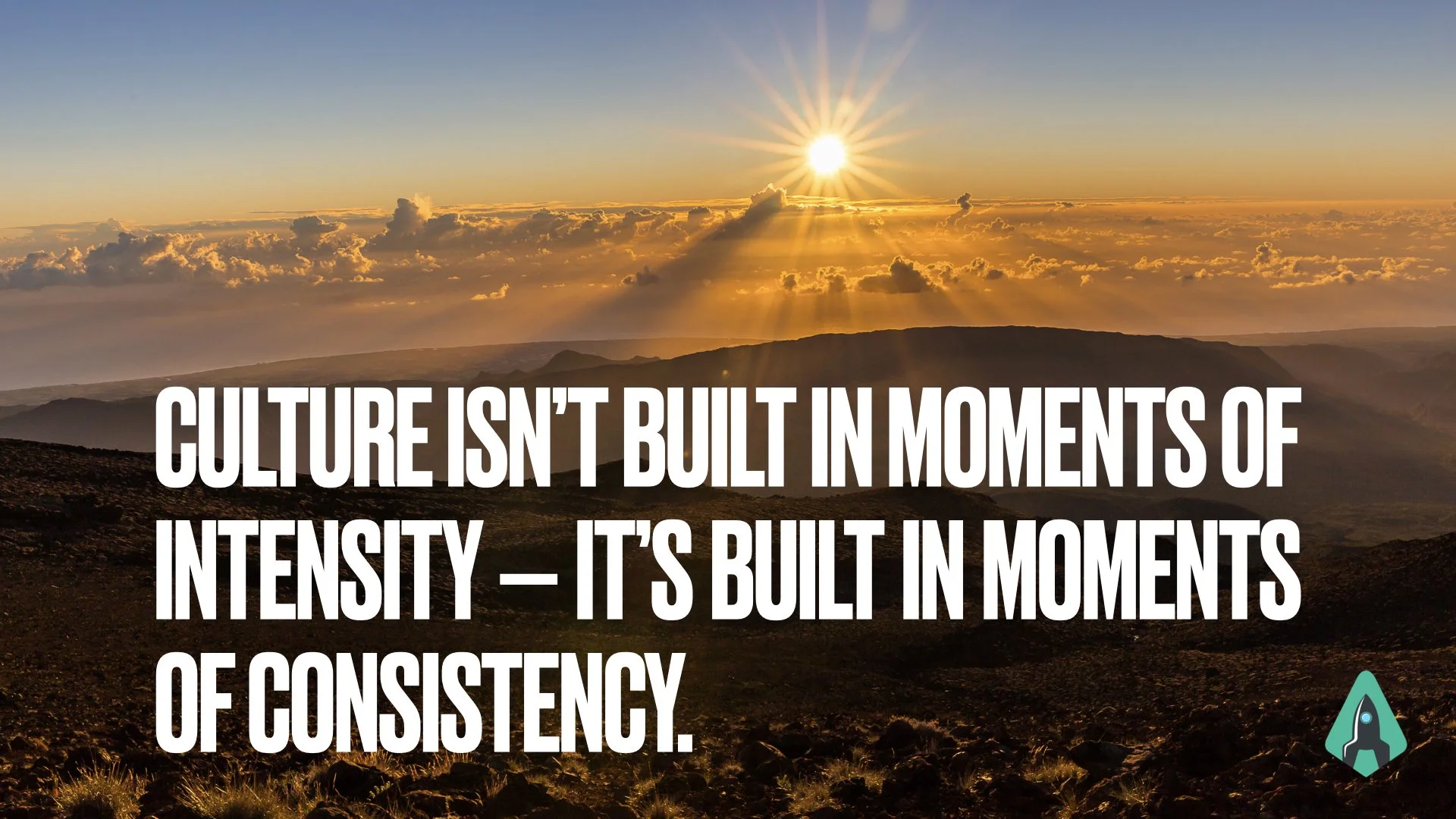Positive Leadership: How Small, Consistent Actions Build Strong Cultures
Positive Leadership isn’t about grand gestures — it’s about consistent, intentional actions that shape trust, culture, and performance every day. Learn how the PERMA model helps leaders translate values into visible behavior.
The Power of Small Actions
When people talk about great leadership, they often think of big gestures — a visionary speech, a bold decision, or a strategic turnaround. Those moments matter. They inspire and align.
But if you look closely at what actually shapes an organization’s culture, it’s not the grand gestures that leave the deepest mark.
It’s the small, consistent actions — the tone in everyday conversations, the way people are treated when things go wrong, and how leaders behave when no one’s watching.
Beyond the Big Moments
Leaders often focus on high points: the strategy offsite, the bonus announcement, the team celebration.
These are important moments of energy and alignment.
Yet culture doesn’t live in these peaks.
It grows in the spaces between — in how feedback is given, how conflict is handled, how success is shared, and how people are treated when pressure is high.
These micro-moments form the emotional climate of an organization.
They tell people what truly matters — more clearly than any mission statement ever could.
The Science Behind Frequency
In the 1990s, researchers Ed Diener, Ed Sandvik, and William Pavot found something simple yet powerful:
Sustainable well-being doesn’t come from rare highs, but from frequent small positives.
A single great experience can’t offset a daily environment of pressure or indifference.
The same applies to leadership.
Leaders who create steady rhythms of positive micro-experiences — rather than relying on occasional motivation peaks — build trust, resilience, and engagement that last.
Positive Leadership: The Operational Side of Culture
Think of Positive Leadership as the operational side of culture — the space where values turn into visible, daily behavior.
It’s not “soft.”
It’s structure — the disciplined practice of reinforcing what helps people and systems thrive.
And it’s measurable:
You can see it in team energy, psychological safety, and collaboration quality.
You can feel it in how people recover from setbacks, share information, or support each other’s success.
The PERMA Lens for Positive Leadership
Psychologist Martin Seligman’s PERMA model offers a practical framework to embed Positive Leadership into daily interactions:
Positive Emotion, Engagement, Relationships, Meaning, and Accomplishment.
Here’s what that looks like in action.
1. Positive Emotion – Set the Emotional Tone
Leadership isn’t about constant cheerfulness.
It’s about creating emotional safety.
Start a meeting with a short check-in:
“What’s one thing that went well this week?”
A shared laugh after something goes wrong reminds the team that mistakes are part of progress, not reasons for blame.
These moments of warmth and openness shape how people feel about showing up.
2. Engagement – Invite Ownership
Instead of assigning every task, ask:
“Who’s interested in taking the lead on this?”
That small invitation signals trust and empowers people to use their strengths.
Ownership fuels motivation — and engagement becomes self-sustaining.
3. Relationships – Build Trust in Micro-Moments
Culture lives in relationships, not in charts.
Positive Leadership shows up in how leaders relate:
Give credit publicly, address issues privately.
Ask for input, not just updates.
Check in with “How’s your workload?” before “Where’s the report?”
Trust isn’t built through grand declarations — it’s built through consistent fairness, curiosity, and care.
4. Meaning – Make Purpose Tangible
Purpose is only powerful when it’s personal.
When a leader says:
“Your analysis helped the client rethink their process — that saved them time and money,”
it connects effort to impact.
That’s how purpose stops being abstract and becomes felt.
5. Accomplishment – Celebrate Progress, Not Just Peaks
Big wins deserve attention — but so do small ones.
“Great job hitting that milestone — that was teamwork,” does more than recognize success.
It builds a shared sense of progress and competence.
Over time, that consistency fuels confidence and resilience.
Positive Leadership Is Not Soft
It’s a system.
A disciplined approach to leading that aligns human well-being with organizational performance.
It’s how culture becomes tangible — not through words on a wall, but through behaviors that repeat and reinforce what the organization stands for.
Because culture isn’t built by slogans or special events. It’s built through the frequency of small, positive interactions that tell people:
“This is how we work together here.”
The Takeaway
Positive Leadership doesn’t require more effort — it requires more intention.
It’s about shifting focus from moments of intensity to moments of consistency.
Because in the end, leadership isn’t defined by what happens at the all-hands meeting.
It’s defined by what happens every day between them.

